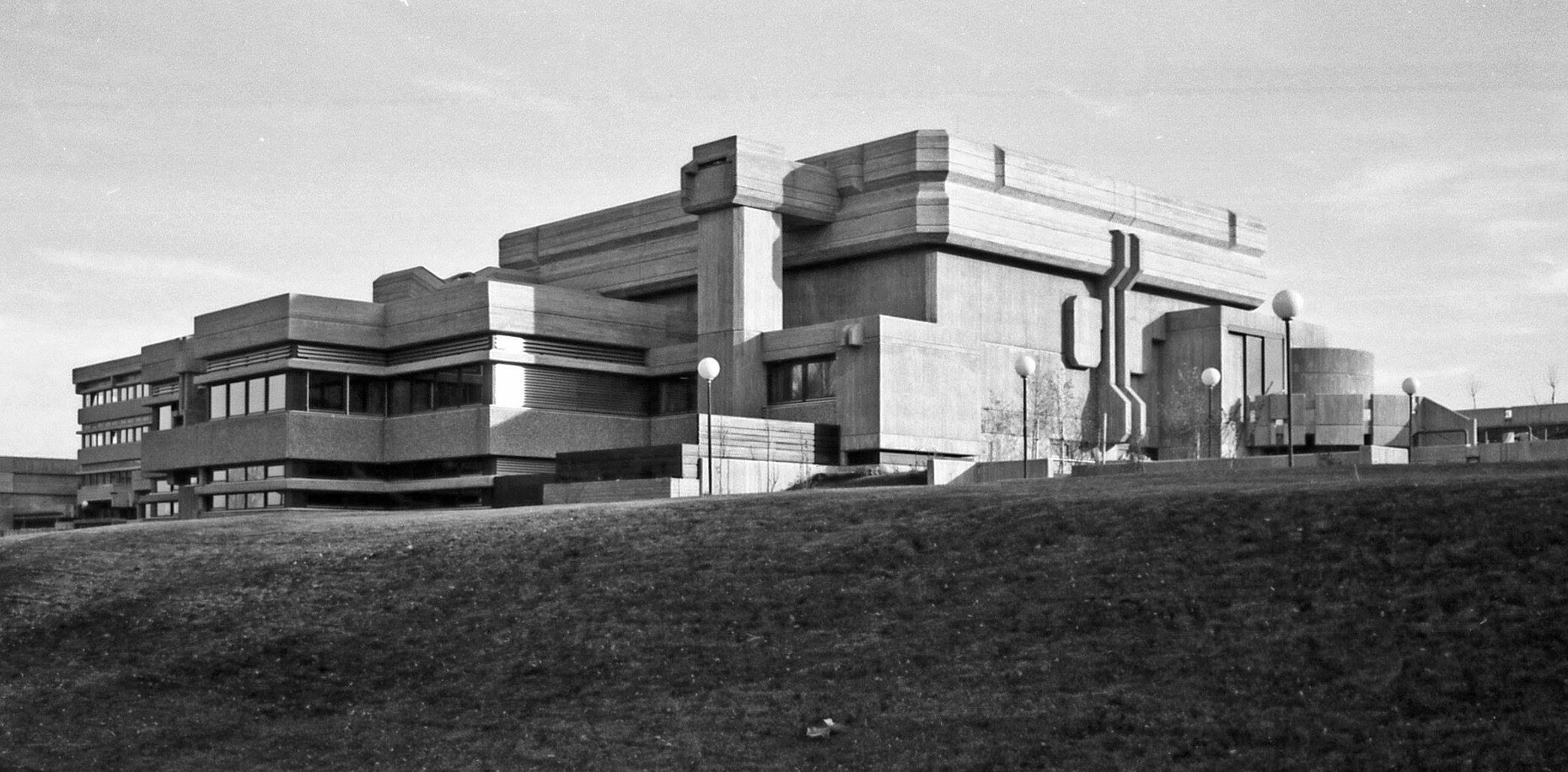A threatened species
In the 1960s and 1970s, committed citizens, students, heritage experts and architects all fought with great dedication for the preservation of buildings that had arisen during the construction boom in the closing years of the 19th century and which were to be demolished to make way for new builds. In the eyes of the critics, these old historicist buildings were inefficient, ugly and an expression of the generally erroneous mindset of the architects in question. In many cases they were replaced by modern concrete buildings that, in the eyes of those who designed them, avoided all the mistakes of the predecessors.
History repeats itself: Today, it is buildings in the so-called “Brutalist” vein, the often sculptural concrete buildings of the 1960s and 1970s that in many cases are threatened with demolition. Not rarely these edifices have fallen into neglect and neither meet today’s mass tastes nor current requirements or standards. Thus, in part to much applause, the wrecking ball goes into action. Frankfurt’s erstwhile “Technical City Hall” and Historische Museum are much-debated examples of where Brutalist architecture has been replaced by purportedly “more suitable” structures.
Opposition has now emerged: The “#SOS Brutalism” Internet platform has established a database for Brutalist architecture in which more than 1,000 buildings world-wide have since been entered. They no doubt benefit from the fact that many Brutalist buildings are highly photogenic, a fact that truly predestines them for the age of social media. It is no real coincidence that current architectures are revisiting the formal vocabularies of the 1960s and 1970s; one needs think only of Christ & Gantenbein’s annex for Schweizer Landesmuseum Zurich or Meili & Peter’s extension to Sprengelmuseum in Hanover. The scholarly and journalistic focus on Brutalism has also gained momentum. For example, two books recently came out, “Finding Brutalism” and “Space Packed – The Architecture of Alfred Neumann”, paint an impressive photographic portrait of Brutalism in both Great Britain and Israel (see our image gallery).
Now, Deutsches Architekturmuseum (DAM) in Frankfurt is launching its “SOS Brutalism” exhibition – here the brains behind the Internet platform are extending them efforts from the virtual domain into real space. The team of curators led by Oliver Elser offer an overview of the way the Brutalist style evolved around the world. To this end, they have had unusually large models purpose made for the show out of concrete in homage to the construction material: In this way, the exhibits highlight the properties and qualities of this group of buildings. It remains to wish the organizers every success in reaching out to an audience over and above the usual architects and architectural enthusiasts, as broad sections of the population continue to dislike the “concrete monsters”. They should be encouraged in this regard by the successful battle waged back in the 1960s and 1970s.
Exhibition:
SOS Brutalism – Save the Concrete Monsters!
Deutsches Architekturmuseum (DAM), Frankfurt
Nov. 9, 2017 thru April 2, 2018
Private view: Nov. 8, 2017, 7 p.m.
Catalog:
SOS Brutalism – Eine internationale Bestandsaufnahme
eds. Oliver Elser, Philip Kurz and Peter Cachola Schmal
2 vols., approx. 668 pages and 1,200 ills..
Separate German and English editions
Park Books, Zurich, 2017
ISBN 978-3-03860-074-9
at the ticket desk: EUR 59.00; from bookstores: EUR 69.00
Further Reading:
Simon Phipps - Finding Brutalism. Eine fotografische Bestandsaufnahme britischer Nachkriegsarchitektur.
eds. Hilar Stadler and Andreas Hertach
german, hardcover, 258 pages, 10 color, 192 duplex- und 28 b/w ills.
Park Books, Zurich, 2017
ISBN 978-3-03860-064-0
38.00 Euro
Rafi Segal:
Space Packed - The Architecture of Alfred Neumann
english, hardcover, 376 pages, 49 color und 373 b/w ills.
Park Books, Zürich, 2017
ISBN 978-3-03860-055-8
48.00 Euro


















